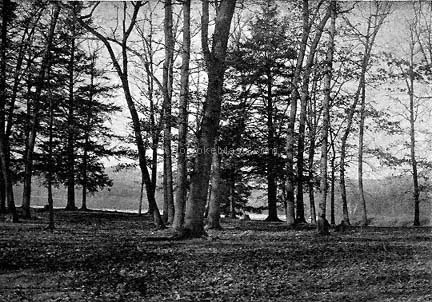A person living in Holyoke without a love for the beautiful must be blind indeed, seeing as he does from almost every street the mountains or the picturesque valley of the Connecticut. But "Art in Holyoke" has a strange sound to many who think of the city as a great manufacturing center. For a number of years, a quiet but growing interest in the Fine Arts was shown by the valuable paintings and pieces of statuary that were steadily added to the different collections in the city, and a need was felt for some permanent organization that would increase this interest and if possible, lead to the development of local talent. To meet this want there was organized in February, 1891, the "Holyoke Society of Fine Arts." The constitution of the society was drawn up on a conservative basis, but one broad enough for a city of any size, and it seems destined to extend and enlarge the scope of its work with the development of the city.

Lamb’s Grove.
|
Its objects are: The encouragement for the love of the Fine Arts, the preservation and permanent exhibition of works of art, the making and exhibiting of temporary collections of such works, and the affording of instruction in the Fine Arts to such an extent as the trustees may decide feasible and desirable. In addition to this, it is proposed to start an Art Library, and arrange courses of lectures on Art, to be given from time to time. The great aim of the society is the building of an Art Museum, and although this is yet in the future, many of the members are confident that it will become a reality, and when we consider the liberality and public spirit which have been so often shown in Holyoke, it does not seem visionary to expect it. The society is in a flourishing condition, its membership includes all who are interested in its objects, which are so plainly deserving that it readily wins the sympathy and hearty support of the community.
|